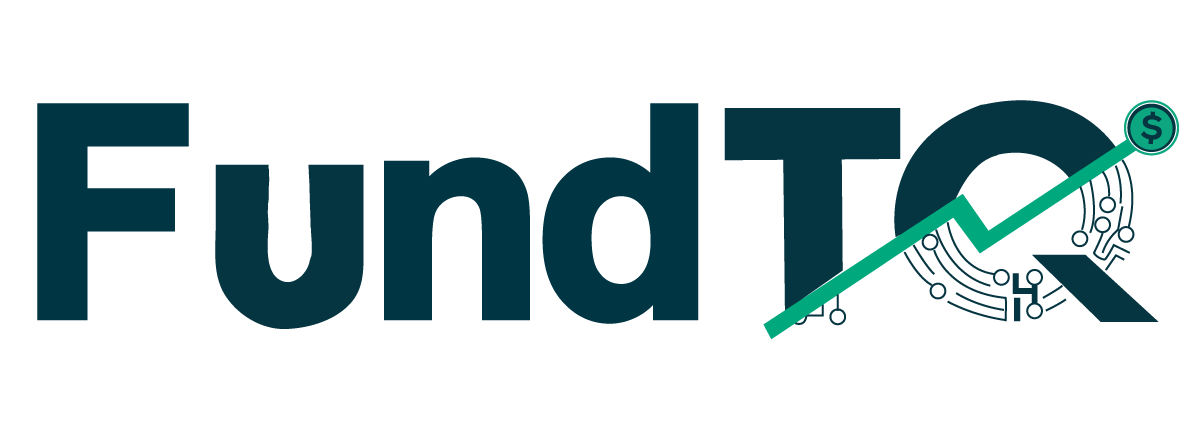Pitch Deck Structure: To Impress Your Investors
A startup’s pitch deck structure is what secures funding for the business. A pitch deck, which usually consists of 10–20 slides, is a short business presentation that highlights the business strategy, traction, and roadmap of your company. It can be used for a variety of purposes, such as setting up investor meetings or giving presentations on demo days, but in most cases, it will determine whether you will be able to obtain capital from investors or not.
Basic Pitch Deck Structure
The core framework stays the same, but different scenarios and time limits allow for the addition of more or less slides and content. The introduction, the status quo part, the product section, the market section, the why us section, and the ask are the six key elements that make up a pitch deck structure.
The 3 main objectives of pitch deck that strive to achieve
- It must communicate the story of your business.
- The investor must be convinced that they can profit from this.
- It has to be finished in less than four minutes.
This reasoning relates to the three-act narrative framework: It’s important to attract your audience, grab their interest, and establish the current quo in the first act. Your narrative should be expanded upon in the second act to generate interest in the business opportunity by presenting figures that are both appealing and unquestionable. The third act is when things really get serious and you deliver the decisive blow, arguing that investing in your business is an incredible opportunity.
A compelling story that follows the above pattern, with a payoff that showcases your company and product and an end result that will convince investors to back your idea, is how a pitch deck structure may become extremely effective. You can even get the structured pitch deck templates of live deals.
Company Stage
When pitching investors, time is of the essence, so it’s critical to consider whether a slide belongs in your deck. This largely addresses the current state of your business, the amount you hope to raise, and who you plan to ask for funding.
The Cover slide and the Traction Teaser slide are located in the Intro Section. The slides including the problem, remedy, and business opportunity make up the status quo section. The Product, Features or Benefits, How It Works, Tech Infrastructure, Market Validation, Business Model, Roadmap, and Target Audience slides comprise the Product Section. The Traction, Go-to-Market or Customer Acquisition, Market Size or TAM, and Possible Outcomes slides are all included in the Market segment. Competitors, Benefits, Case Studies or Testimonials, and Team Slides are all included in the “Why Us” section. The Financials and Fundraising slides are finally included in The Ask.
Once more, not every pitch deck has to contain same pitch deck structure. You will lack traction, testimonial slides, and comprehensive financials if you are just starting out and getting funding from friends and family.
Intro Section
Cover
A brief (five to seven words) description of what you do should be on the cover slide. It should be easy to read and self-explanatory. The tagline serves as a very basic explanation of what your business performs rather than being a marketing slogan.
While it’s usual to add the presenter’s name and some contact information, it’s not really required. Nobody will bother to write them down at the outset if you’re pitching in person. They will already have your contact information if you are giving the deck to them by email.
Traction Teaser
You might include a brief Traction slide that confirms your company and gets people interested about what’s to come if you want to grab their attention right away.
Recall that people are entering your firm with no prior knowledge of its context, therefore the information you provide here must be easily understood by all visitors without regard to the specifics of your industry. This is where you may take pride in your greatest successes to date, the ones that are clear to all and require no additional explanation.
Status Quo Section
Problem/Business Opportunity
Most great companies solve global problems:
- Uber resolved inconsistent cab services.
- Excess emails and meetings were resolved with Slack.
- File syncing between devices was resolved by Dropbox.
- FundTQ is solving the problem of finding the business valuation, with the help of FundTQ’s automated valuation software.
If you get this slide right, you’ll have a little “aha!” moment when you identify a problem that people encounter frequently but haven’t seen because it’s right in front of them and so apparent.
This slide can also be the final straw in your pitch if you make unsupportable claims that the investor finds hard to believe in. You could lose them here if they ‘disagree’ with you on this point.
Some businesses are taking advantage of newly presented economic opportunities rather than necessarily solving problems. Mobile games are one example of this; they are merely capitalizing on a financial opportunity that they have found, not really solving a problem.
Solution
Consider the solution slide to be the problem slide’s reflection. Recall that this is the primary story point. This is the moment to challenge the current status.
Fantastic resolution Additionally, slides are short & crisp. They have nothing to do with features or technology; now is not the time to discuss the product. We are introducing our thesis: what if we used this new strategy in place of doing things the way they are now done? Concentrate on just one powerful statement. The ultimate outcome, the primary advantage of your service or product. The what, not the how.
Keeping with the prior example, consider Uber’s offering: a quick and easy on-demand automobile service that provides you with accurate details on the time of pickup, arrival, and cost.
Product Section
How does it work?
This will be the most distinctive section of your pitch deck structure because it highlights what makes your product or service special. This slide can be used in a variety of ways, such as a how-it-works flowchart, a brief video demo, or even a collection of product screenshots. These slides can serve as a source of inspiration as they are likely to resemble your marketing landing pages.
Features
Consider this slide as a summary of the advantages your product offers to the user, as opposed to a description of its features and methods. Just like FundTQ provides the structured pitch deck templates& financial model templates, which you can edit easily. Consider it from the opposite angle: consider the convenience or significant shift your product represents for your intended market rather than what it accomplishes.
It’s critical that this part be effective and efficient. Although the product is important to investors, their first concern is the numbers.
Product Details (Demo video, screenshots, tech infrastructure, etc)
This section also heavily depends on your particular product. An ‘Underlying Magic’ slide that describes in simple terms how the technology works to offer the ultimate benefit to the target customer is also crucial for goods with a significant technological component or when the tech infrastructure is one of their key differentiators. If you are pitching in person and your offer is a physical good, you may certainly show the thing yourself on a blank “demo” slide.
Videos may be effective in certain situations, but keep in mind that investors want to be able to watch the entire deck in less than five minutes, so be clear and direct.
Market Validation
We attach a ‘Market Validation’ slide to assist items for which adoption can be difficult. For instance, Airbnb included a market validation slide in their 2009 pitch deck to support their claim that travelers would be open to staying on strangers’ couches.
Target Audience
Presenters frequently eliminate this slide from presentation decks, especially those of later-stage startups. This one could be crucial if you’re just getting started or if it’s one of your early rounds.
The purpose of a Target Audience slide is to demonstrate that you understand the target market for the product. Too many businesses fail to address this issue, which is frequently a deal-breaker. Working backwards from an understanding of the end user makes great market acceptance easier.
Business Model
Let’s move on to the Business Model. This is one of the most straightforward presentations to understand, yet it’s also one that many business owners misunderstand.
It’s easy: how do you generate income?
Is it a subscription? If so, please describe every plan in detail. From what I’ve seen, these details should change frequently as you try out various combos. Just let us know if it’s a $XX subscription. either in a trial or not.
Tell us if it’s a service or a product, what the cost is, perhaps the size of the typical order, and an estimate of the margin. What is the margin on this product—30% or 60%? That also holds true for online shopping.
Make it easy. This presentation is all about how you make money; it has nothing to do with forecasts or hypothetical profits from a million consumers.
Of course, some businesses combine multiple business models, but it’s usually unnecessary to list everything here. Try to keep this to no more than two or three sources of income, and avoid going into too much detail about the specifics. Your goal is to provide something straightforward and understandable and respond to any follow-up queries that this pitch deck structure may raise throughout the meeting.
Roadmap
An ideal Roadmap presentation covers some of the key moments in the development of your product and the history of your firm before discussing the direction you want to take the product in the next months.
This roadmap slide becomes crucial for hardware and medical enterprises, as they are unlikely to make any money until after an extended and lengthy research and development process.
Remember that since this is the product part, we are talking about the product vision rather than the numbers just yet. We are not yet doing financial estimates. Don’t mix in sales estimates with this.
Market Section
Go-to-Market Strategy
The most frequent errors made while creating Go-To-Market slides include being unfocused, dispersing the company’s marketing efforts too thin, and spending money on channels that are overly crowded or don’t produce returns right away unless you are an authority in them. It’s possible that attempting to market through numerous channels at once is just as ineffective as doing none at all.
A fantastic go-to-market slide should cover two or maybe three really distinct, targeted channels that you are currently and will stay using to expand your client base.
- How did you get to be here?
- What actions do you take that seem promising?
- Next, what are you going to do?
Keep in mind that rounds of money typically cover 18 to 24 months of operating expenses, so what we’re looking for is a growth plan, or a strategy for marketing the company to reach the next fundable milestone.
Market Size/TAM
“How big does this company get?” is the question this slide attempts to answer.
Total Addressable Market, or TAM, is the idea behind that, but many of us are not very familiar with it. What is TAM? Once more, the question is how big this business is and how much money it could produce if it had all of its target clients. That is what TAM.
In order to calculate TAM, you must estimate the number of consumers or businesses who would be willing to purchase your product.
Here, two earlier slides become crucial: the business model comes first, of course. You need to be aware of the revenue that each of your clients will bring in. The target audience slides come in second. This TAM number might rise rapidly if you are unsure about your consumer base, which is often not a good thing.
You need to be really certain about both your target market and your pricing.
Why Us Section
Competitors
Most businesses will face rivals. Presenting a competitor slide that declares that you have none at all is typically cause for concern. The deadly error that many founders commit is thinking that they are the only ones doing what they do.
You can pretty well abandon up on a lead if, during your pitch, you claim to have no competitors and an investor happens to know of a business that does. Nothing is more detrimental than a dearth of research.
You can use this slide as a straightforward business grid chart, a table that compares characteristics, or a condensed list of your main rivals.
Team
A startup’s founding team must possess the abilities to grow the business to $1 million in revenue.
If you are developing an app, business/operations, UX, development, and marketing are necessary to reach $1 million in revenue. You require engineers, business development, and sales if you are developing a B2B SaaS platform aimed at enterprises.
Secret Sauce
The title of this slide is Competitive Advantages more often. You can use this slide to discuss anything that makes you unique, including patents, distinctive elements of your technology, distinctive supply chain participants, and more.
When discussing competitors, the goal should be to demonstrate that you grasp a part of the market that others don’t appear to appreciate, rather than just comparing features and prices.
The Ask Section
Financial Projections
The Financials slide is simple: if your business has been in operation, we would want to see statistics from the most recent fiscal year. After that, everyone should have three to five years’ worth of financial estimates for their business.
SG&A, COGS, CAPEX, revenue, and a final profit margin and percentage figure are usually included by founders in a straightforward table, which necessitates basic financial modeling.
The Ask
The fundraising presentation should clearly outline the next fundable milestone we discussed and include the amount of money you are raising.
The goal of a Seed round is to continue till a Series A. This round should last long enough for you to get Series A status plus an additional six months to close that round, as it takes roughly six months to close a round.
A common slide in decks is “this round funds 18 months of operations,” which isn’t always a terrible thing as long as the calculation underlying that figure relates to a fundable milestone. It’s all about measurements, not time.
Tips For Pitching
For many business entrepreneurs, creating a pitch deck for their first investor can be an intimidating task. We understand how many entrepreneurs just give up midway through the process of determining their market, go-to-market strategy, and finances.
The first difficulty here is that a pitch deck is meant to provide a brief yet captivating overview of a business possibility. occasionally the founders haven’t had a chance to sit down and work out some crucial business elements, or occasionally the idea isn’t fully developed.
The key takeaway from this is that you are solving a number of important strategic business decisions by addressing your pitch deck. Pitch decks tell the story of the company. When you see a deck as a story, you can begin to create a story arc that includes adversaries, climaxes, developments, and plot elements.
This is an outline for a pitch deck structure that converts into an amazing tale for MOST organizations.
Storytelling is what our team of seasoned experts excels at. Together, we will analyze your company’s operations and develop a proposal that highlights your special selling point.
Our pitch deck templates can assist you in obtaining the necessary money, regardless of whether you’re trying to expand an existing company or raise capital for a brand-new venture. Talk to us right now to find out more.










